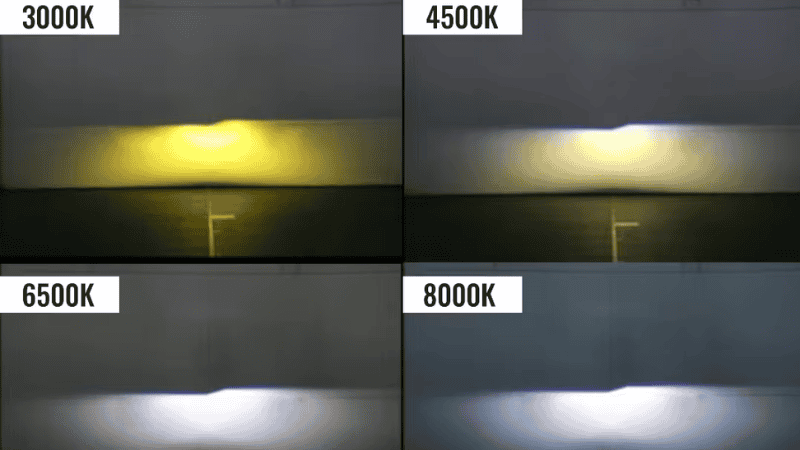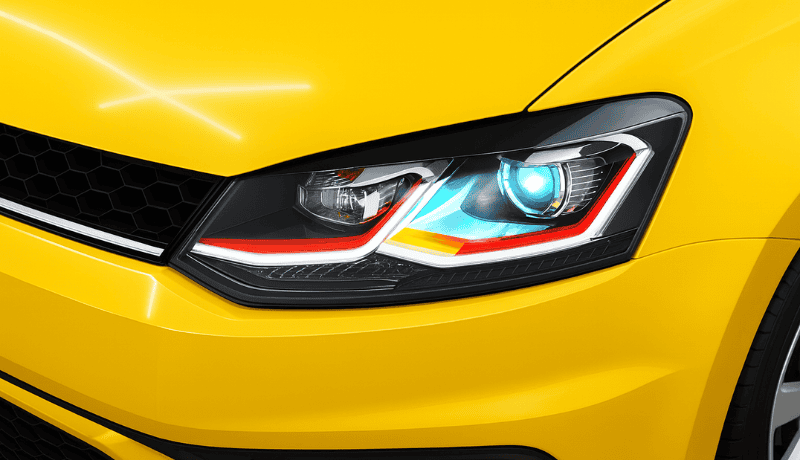A 10000K headlight bulb sounds like it should be twice as bright as a 5000K bulb, but this isn’t the case, at least not to our human eyes. Color temperatures have little to do with brightness. However, they affect visibility, hue, and other things when used in lighting.
Many drivers don’t understand color temperatures, and this makes it easy for them to buy LED bulbs with the wrong hue.
In this article, we’ll be explaining the theory behind color temperature and why it’s an important consideration when buying LED headlight bulbs. We’ll also look at common LED headlight color temperatures and discuss which one might be better for your headlights.
Understanding LED Headlight Color Temperature
Color temperature is a parameter that describes the hue of the light produced by a certain light source.
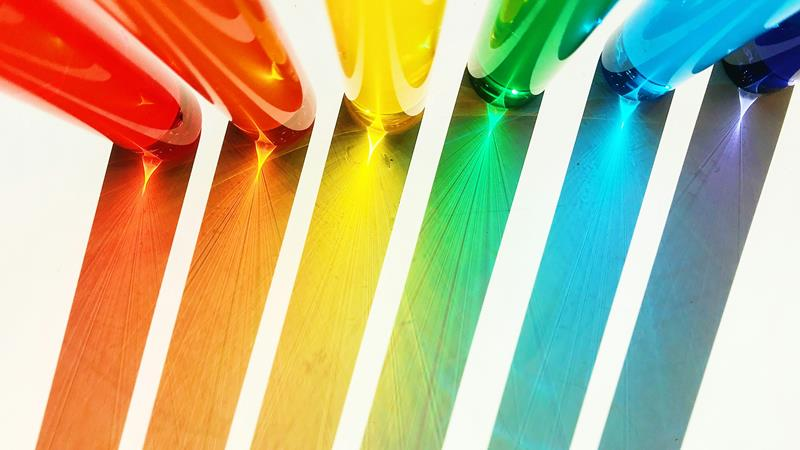
Although it is measured in Kelvin, a unit associated with temperature, the color temperature of LED lighting has little to do with the actual temperature of the light source.
Origins of Color Temperature

The concept of color temperature comes from the theory of the colors that would be emitted if some idealized material (called a black body radiator) was heated to different temperatures. Heating a metal can approximate this idea.
When a metal is heated, it starts red hot before turning orange, then yellow, then white, and even blue if it gets hot enough. These color changes are due to changes in the wavelength of the radiation emitted by the material as it heats up.
The wavelength of radiation becomes shorter with an increase in temperature. Since red has the longest wavelength and violet has the shortest, as the temperature rises, the color of the idealized material would change from red to violet, transitioning between the other colors, including yellow and blue.
Range of Color Temperatures

The color temperature range used for light typically goes from 1000K to around 12000K. At around 1000K, the light will be a solid red color. Automotive headlights don’t come in color temperatures this low. At around 2500K, the light will start to take on an orange hue.
Regular incandescent bulbs have a color temperature of around 2800K, while halogen bulbs are at 3000K. The color at 2800K – 3000K is a pale yellow, which is acceptable for automotive headlights.
The color hue gets paler and paler until it becomes mostly white at around 5600K. Above this color temperature, the hue takes on a visibly blue tinge. You can easily get headlight bulbs with color temperatures as high as 8000K, but these have an unmistakable blue hue.
At 10000K, the light color is pure blue; at 12000K, it’s purple. Automotive LED bulbs at these color temperatures are less common.
How LEDs Emit Different Light Colors
The optimal operating temperatures of many LED chips are below 100ºC, while the filament of incandescent bulbs must reach temperatures of over 2000ºC to produce their characteristic yellow light. Why is the light emitted by LEDs at higher color temperatures?
The white light from an LED headlight comes from LEDs that produce blue light. The blue light comes from the unique materials used in the LED.
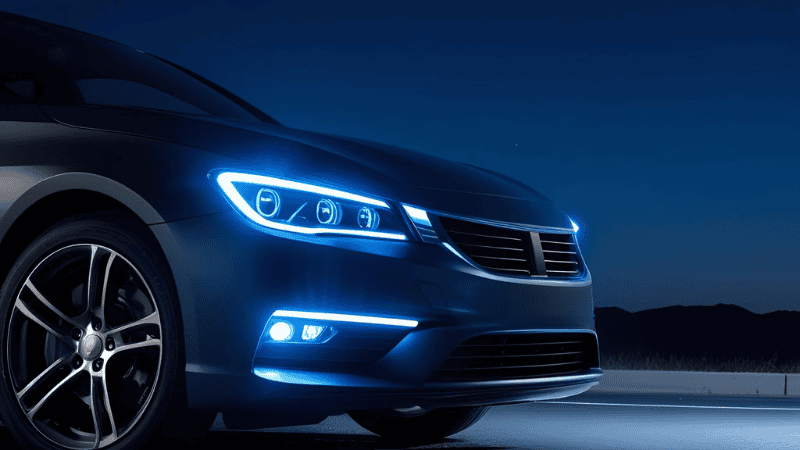
This blue light can be mixed with other colors to produce white light or directed towards a phosphor that converts some of the blue light to yellow. The light’s degree of blue or yellow can vary depending on the desired color temperature.
Importance of Choosing the Right LED Headlight Color
There is more to color temperature than just the look. Choosing the wrong color can affect your ability to see at night or cause more glare for other drivers. Here are a few reasons why choosing the right LED bulb color temperature for your headlights is important.
1. Visibility
A confusing aspect of color temperature is that higher doesn’t always mean brighter.
The brightest headlights have color temperatures ranging between 4300K and 6000K. Most headlight bulbs have color temperatures in this range. The colors above and below this range are noticeably less bright to our eyes, resulting in poor visibility.
2. Glare
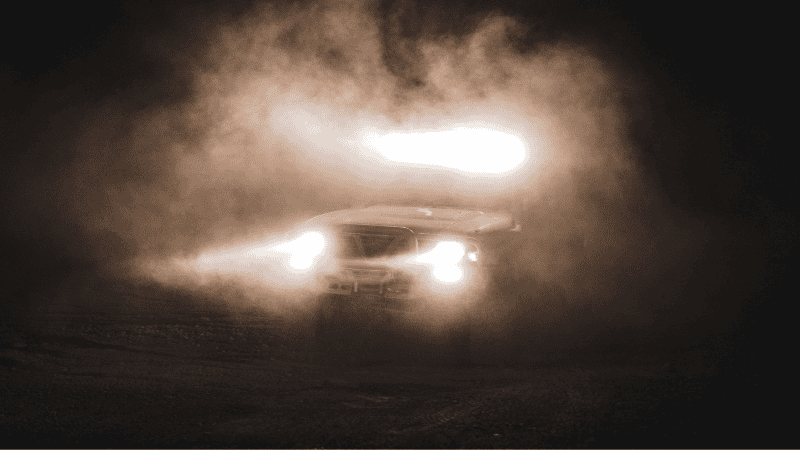
Another reason to avoid choosing headlights with color temperatures above 6000K is that the bluer light may be more blinding to other drivers.
Studies on this issue are not yet conclusive, but there are many reports that drivers find it more uncomfortable to look at approaching vehicles when they have headlights with a blue hue. Some say this is because human night vision is not adapted to this kind of light at night.
3. Aesthetics
The blue-white color temperature is associated with cars that are more modern, while the pale yellow headlight color is associated with older cars that mainly had halogen bulbs.
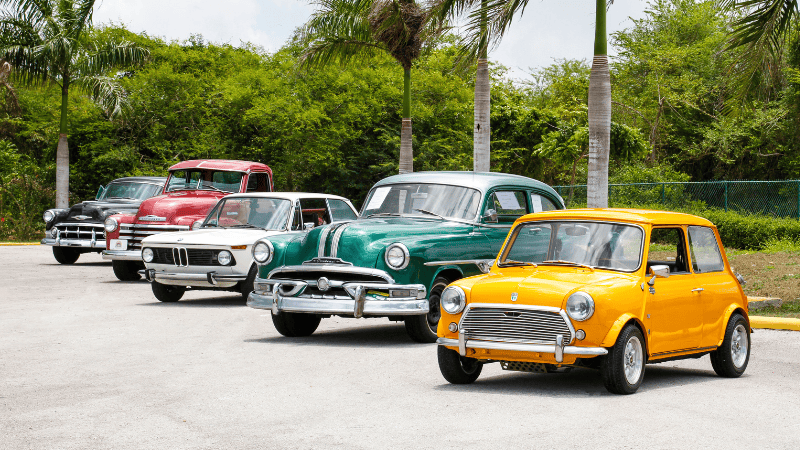
Depending on the look you’re going for, you may need to find LED headlight bulbs with a color temperature that’s similar to that of halogen bulbs or bulbs with a whiter or even bluer color.
4. Legality
In some jurisdictions, having certain types of blue headlights is now illegal. These laws tend to focus on blue headlights that are added as aftermarket modifications, e.g., by purchasing blue headlight bulbs.
Therefore, before settling on a specific headlight color, you should consider whether installing them may have negative legal consequences.
5. Fog Penetration
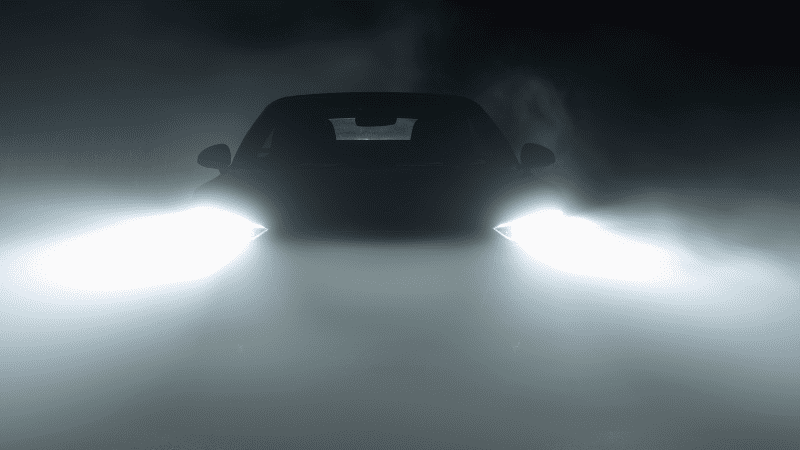
Lights with higher wavelengths penetrate fog better. This is because fog contains suspended water droplets. These droplets reflect light from headlights, but shorter color wavelengths are reflected better.
This also means that these light colors are scattered more in the fog, making it harder for the driver to see. This is why foglights have traditionally been yellow and not blue.
Common LED Headlight Colors and Their Uses
Thanks to modern engineering, LEDs can achieve a wide range of colors. However, the range of colors you can get LED headlights in is smaller. Additionally, some of these headlight colors are more about style than improving visibility at night.
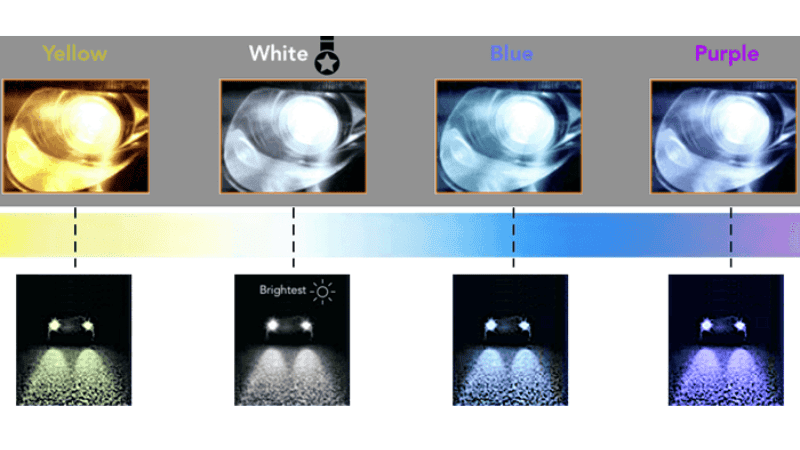
White
This is the light color for headlamps rated 5000K to 6000K, though many white headlights will also have a hint of blue in them.
White offers the best visibility at night and is not available from halogen bulbs. Many modern cars have headlight color temperatures approaching white.
Yellow
The light from LED headlights with color temperatures ranging from 3000K to 4000K will have a noticeable yellow hue. This is the color associated with traditional halogen bulbs and is a good choice for classic cars.
The illumination of yellow headlights is okay, but many drivers find them inadequate. Yellow bulbs still make the best fog light bulbs because they have better penetrating power than white or blue.
Blue
Headlights with a blue color have color temperatures higher than 6000K. Blue lights are great for style and the visibility is okay as long as the color temperature is in the range of 6000K to 8000K.
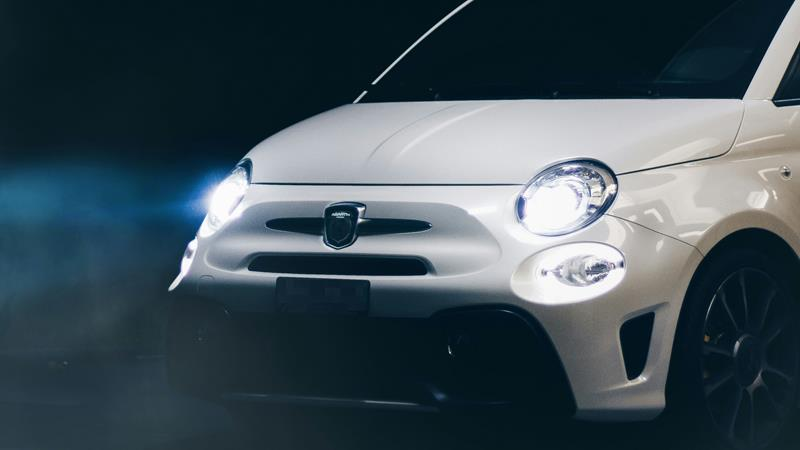
Above 8000K, the lights will be bluer and more stylish but will offer poor visibility. Many modern cars have headlights with some amount of blue in them. As stated earlier, if the blue in the headlight is extreme, you may face legal consequences in some places.
Purple
Purple headlights are a lot less common than the other headlight colors. These have color temperatures around 12000K.
Purple headlights offer poor visibility and are mainly installed to achieve a certain look. These are also likely to be illegal in many places because they can compromise night driving safety.
Warm Vs. Cool Colors
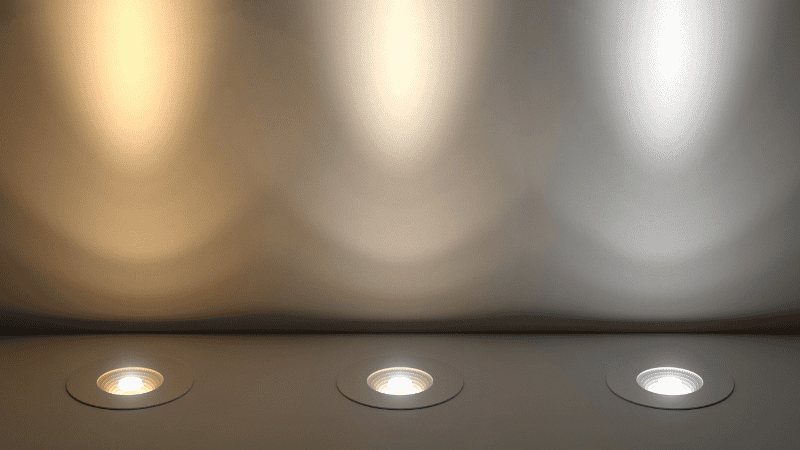
Another confusing aspect of color temperature is that colors with a low temperature are described as warm, and those with higher color temperatures are called cool.
These subjective descriptors refer to visual temperature. Warmer color temperatures have hues associated with hot things like fire, e.g., yellow and orange, while cooler color temperatures are associated with cold things.
Relationship Between Wattage and Brightness
Neither high nor low color temperatures translate to a brighter light output. Visibility decreases on both ends of the color temperature spectrum. The human eye finds color temperatures in the range of 5000K to 6000K to be the brightest. On the other hand, wattage has a direct relationship with brightness.
What is Wattage?
Wattage is a measure of the amount of power that goes into a light bulb. Traditionally, the more wattage a bulb consumes, the brighter it will be, i.e., the more lumens it will put out.
Common wattages for headlight bulbs are 25W, 35W, and 45W. 25-watt LED headlight bulbs put out around 5000 lumens. At the same power rating, a halogen bulb will produce less than 1000 lumens. 45-watt LEDs can put out around 9000 lumens of light.
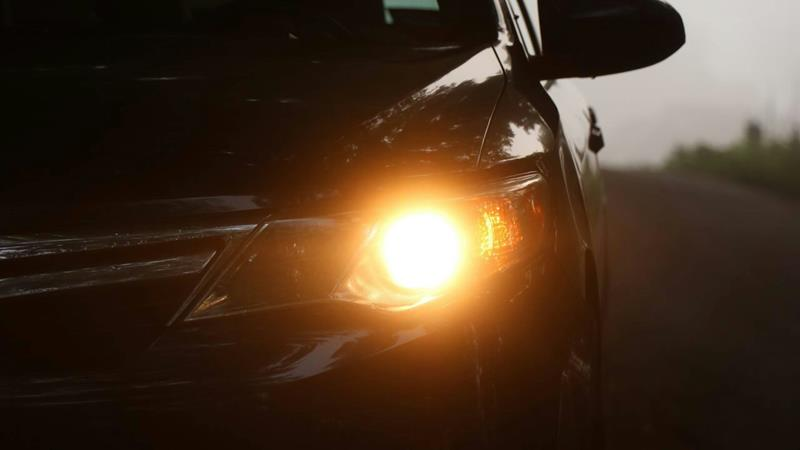
Due to differences in LED chip technology and bulb efficiency, LED bulbs with the same power rating can have very different levels of light output. Newer LED technologies are likely to get more efficient and brighter without consuming more power.
Effects of Higher Wattage In LED Lights
In the past, drivers dealt with low-performing headlight bulbs by replacing them with higher-wattage ones. This made the headlights brighter but the higher power consumption could cause problems if it exceeded the rating of the wiring or the electrical system.
Some bulbs can also emit enough heat to damage the headlight housing.
LED bulbs emit a lot less heat than halogen bulbs and are less likely to damage nearby components. Their efficiency also means they don’t need to draw a lot of power for a brighter light output. However, LED bulbs do get hot, and they are extremely sensitive to heat.
A high-wattage LED light bulb must be balanced with an excellent cooling system; otherwise, it will not serve you for long. Some super-bright LED bulbs in the market have this problem.
What is the Best LED Color for Automotive Headlamps?
The best-LED color for automotive headlamps depends on both objective and subjective factors. A factor like better visibility makes a lot of sense until you remember that headlights that improve visibility for you can reduce it for other drivers.
Consider Applications and Driving Conditions

When choosing LED headlight colors, you should consider your typical driving conditions. If you mostly need headlights on clear nights, a white or even slightly blue LED headlight should be fine. If you have to drive through fog regularly, fog lights with a slight tint of yellow may serve you better.
Purer blue and purple headlamps don’t offer good visibility and should be avoided on the road. However, if you’re styling a car for a show, these headlights can improve the look.
Headlights with a yellow hue are perfect if you’re trying to replicate the look of halogens, e.g., on a classic car. If your headlight assembly scatters a lot of light, you may also want to consider warmer colors, as these will be less irritating to other drivers.
LED Color Inconsistency
Two sets of LED headlights, even those from the same manufacturer, claiming to have the same color temperature, may have slightly different hues. Color temperature doesn’t define a specific color, and it’s best to think of it as a spectrum.

Getting the exact color from one batch to the next is a challenge, but the problem can be worsened by the use of low-quality materials. You can limit this problem by working with reputable manufacturers such as Carlightvision and getting products from a single batch.
Conclusion
Color temperature in LED headlights has nothing to do with the actual temperature of the light source. It is an important quality because it affects how we perceive the brightness of the headlights and this affects visibility.
White, yellow, and blue are the most common LED headlight colors, but you can also get purple headlights to add a bit of style to your car. There is no ideal color temperature, but headlights between 4300K and 6000K are said to offer the best visibility.
Get Your Ideal LED Headlight Color From Carlightvision
Are you looking to buy LED headlight bulbs that have a specific color temperature and won’t change color with time? Carlightvision is the supplier you should talk to. We have invested years researching different characteristics of LED lights, and we know how to meet your color and quality needs. Visit our website to preview our LED headlight products and more.
